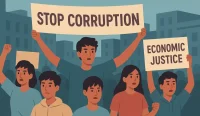Recent headlines suggest the U.S. labor market is faltering: job growth is sluggish, unemployment is creeping higher, and jobless claims have spiked to near four-year highs. Yet economists caution that the story isn’t entirely bleak. A key concept known as the “breakeven” employment point helps explain why the market still has some resilience.
The breakeven point measures how many jobs the economy must add each month to keep the unemployment rate from rising. Historically, that figure hovered around 90,000–100,000 new jobs. But today, with fewer people entering the workforce, the threshold has dropped to roughly 40,000–60,000 jobs.
Demographic shifts are a major factor. Millions of baby boomers are retiring, and immigration flows remain below pre-pandemic levels. This means fewer workers are competing for jobs, allowing even modest hiring to stabilize unemployment. August’s gain of about 22,000 jobs looked weak on paper, but given the smaller labor force, it may be close enough to prevent a sharp rise in joblessness.
The Job Market Is Stronger Than It Looks
Even at the “breakeven” point, the labor market shows resilience. Employers who act now can capture top talent before demand heats up further. Post your job on WhatJobs today and connect with qualified candidates worldwide — free for 30 days.
Post a Job Free for 30 Days →Economists say this doesn’t mean the market is booming. Wage growth has cooled, and certain sectors — retail, hospitality, and manufacturing are showing strain. But the breakeven lens suggests the U.S. economy is not as close to a jobs crisis as raw figures imply.
Another dimension is productivity. Employers are investing in automation and process improvements, allowing them to meet demand without large hiring surges. This helps explain why job creation can slow even as output holds steady.
The Federal Reserve is watching closely. Central bankers weigh not just headline job gains but also labor supply, participation rates, and demographic trends. A lower breakeven figure gives the Fed more space to manage interest rates without risking runaway unemployment.
For businesses, the takeaway is nuanced: they may not need to fear an immediate hiring collapse, but competition for skilled labor remains fierce. Sectors like healthcare, logistics, and tech support still report chronic shortages. Employers that maintain training programs and flexible schedules could retain an edge.
FAQs
Q1: What is the “breakeven” employment point?
It’s the estimated number of jobs the U.S. must add each month to keep unemployment stable, factoring in changes to labor force size.
Q2: Why has the breakeven figure dropped recently?
Retirements, lower immigration, and slower population growth mean fewer people are seeking work, so fewer new jobs are needed to hold unemployment steady.
Q3: Does a lower breakeven mean the job market is healthy?
Not necessarily. It means unemployment might stay steady even if hiring is soft, but weak wage growth or sectoral layoffs can still harm workers.
Q4: How should workers respond to this environment?
They should focus on upskilling and targeting sectors with solid demand, such as healthcare, energy, skilled trades, and tech-enabled services.
Case In Point
Maria, a 29-year-old logistics analyst in Florida, watched headlines about weak August hiring with unease. After reading an economist’s note on the breakeven concept, she realized her industry is still short of workers despite national slowdowns. She decided to complete a supply-chain certification offered by her employer, helping secure her role and positioning herself for future promotions.




